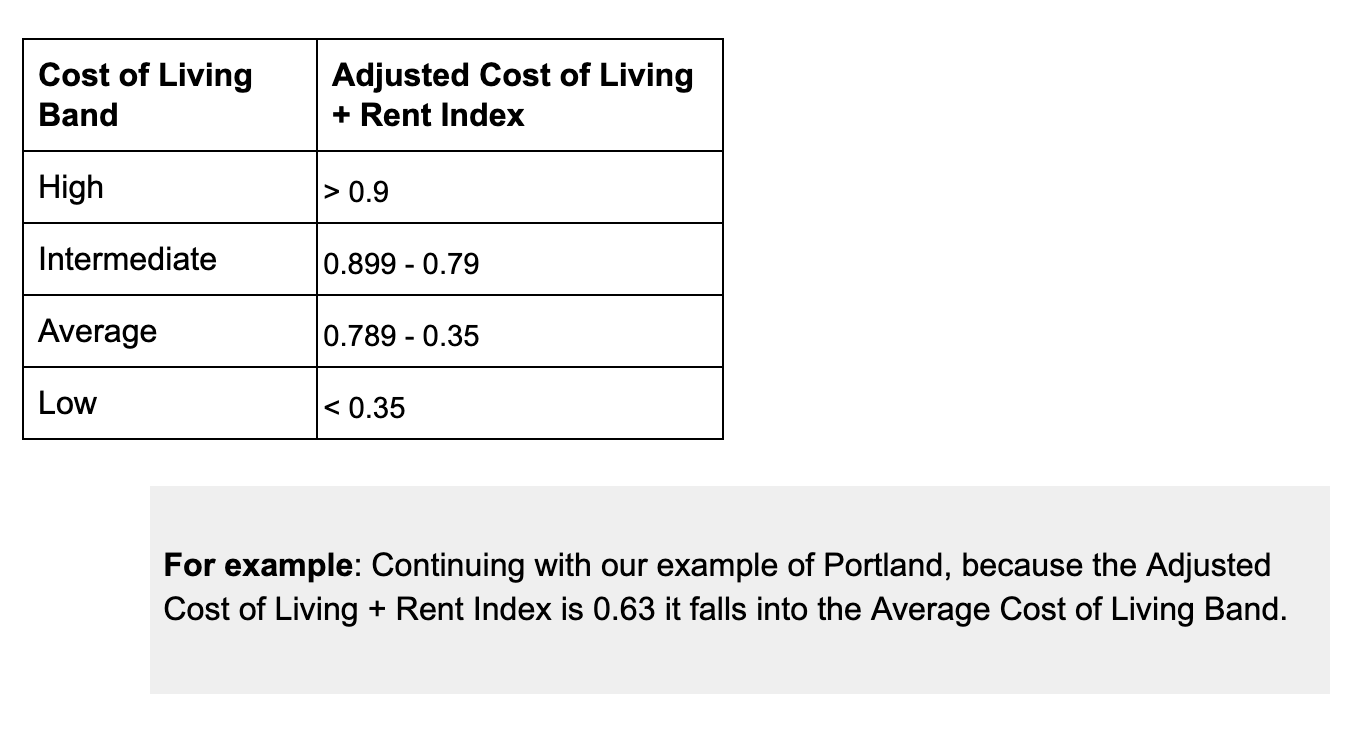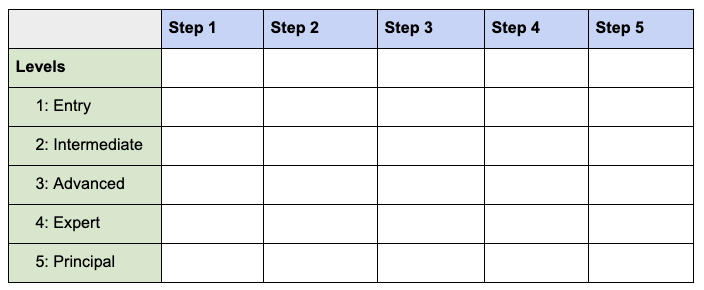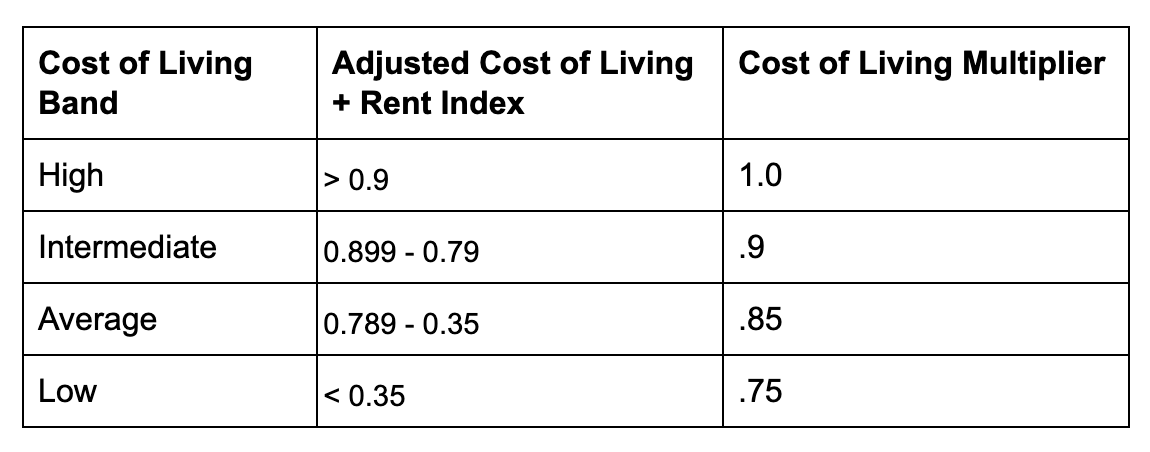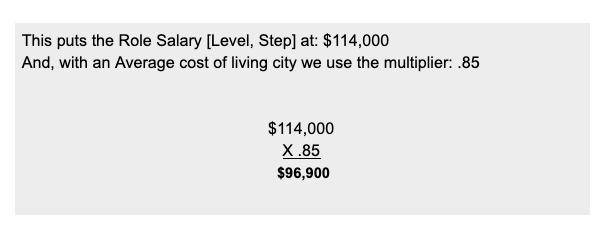How We’ve Connected Salary to Both Personal and Company Growth
Comp.
Whether you finish the rest of that word with -ensation or -licated, compensation is an important piece of running a business and hiring a great team.
We are dedicated to creating a great place to work where team members understand how they can grow and develop at Tuff. Also, as a bootstrapped team, it is important for each of us to understand how our spend impacts our overall profit and ability to help our clients grow.
To support these behaviors, we compensate our team in two ways: Base Salary tied to a Career Framework and Profit Sharing
Base Salary through a Compensation Formula
We wanted to create a compensation formula that was flexible enough to adjust for factors like experience and location but broad enough that it didn’t require in depth calculations and research every time we bring on a new team member.
It was also important to us to use a data source and apply structure to our salaries to reduce bias and hold us accountable to paying people fairly.
We wanted simplicity and objectivity. Enter: a compensation formula.
We share this with the whole team:
We’ll break it all down below.
Role Salary: How do Levels & Steps work?
We’ve created a Career Framework with a system of Levels and Steps for each role to make sure teammates have the opportunity to grow in flexible ways.
Levels: Levels make up the vertical axis of the career framework. At Tuff, there are 5 levels for individual contributors: Entry, Intermediate, Advanced, Expert, and Principal. Levels are defined for each role at Tuff and mark distinct jumps in terms of area knowledge, role complexity, and scope.
Steps: Steps make up the horizontal axis of the career framework. At Tuff, there are 5 steps housed within each Level and are meant to mark smaller milestones of growth. Steps are defined at a company level, not specific to your role. Rather, they are defined by increasing amounts of Ownership and Initiative.
Using this Career Framework, we’ve entered early-stage company salary data at each level of experience for every role at Tuff.
Here it is in action for our Growth Marketer role:
Cost of Living Multiplier: How do we adjust for remote?
We have been remote from the start and a big piece of that decision was wanting to access talent from anywhere in the world. We chose a high cost of living city as our benchmark so we can keep our salaries competitive.
We start by understanding the difference in cost of living in the team member’s city compared to San Francisco. Using Numbeo, we calculate the Adjusted Cost of Living + Rent Index to compare two cities. Then, using this number the city falls into a defined Cost of Living Band.
Adjusted Cost of Living + Rent Index
This compares the Cost of Living + Rent Index between two cities. By starting with a base of $1,000 in San Francisco, we look up how much money we would need to have the same standard of living as the city we’re comparing.
Cost of Living Bands
By finding the Adjusted Cost of Living + Rent Index, each city falls into one of the following bands:

The Cost of Living Multipliers
These calculations help us get to the final number needed for the compensation formula. Once we know what Cost of Living Band a city falls in, we can use the Cost of Living Multiplier to reach our final base salary.
Putting it all together
As a reminder, here is our compensation formula:
Let’s pretend we’re about to make an offer to a new Growth Marketer on the team who is based out of Portland. We were looking to hire someone who fell into our Level 4 definition of a Growth Marketer and we found someone great!
We decided to make them an offer at Level 4, Step 2 and pull that Role Salary from our Career Framework.
To dive deeper into our compensation formula, you can view our spreadsheet here →.
Profit Sharing
The other piece to how we compensate Tuff employees is through Profit Sharing.
Because we’re a small team, everyone works directly with clients and shares responsibility in driving their growth. The more our client’s grow, the more we grow and we wanted that to reflect in our compensation. We don’t offer the traditional stock options that some startups and public companies do but Tuff’s team members are critical to our success on every level.
We distribute profit sharing on a quarterly basis so once you’ve been at Tuff for a quarter, you are eligible. We look at Tuff’s profit balance, your time at Tuff, and your performance to calculate each team member’s share.
At this point in Tuff’s growth, the amount we offer in profit sharing is quite low. It’s not going to give someone the ability to retire anytime soon! But, it’s important to us to offer profit sharing so early because each team member truly is an owner in our Tuff’s growth.
Continue Reading
We’ve worked closely as a team to develop our compensation formula and to make the decision to offer profit sharing.
While building our own version that works for Tuff, we’ve also leaned on some great existing resources. If you’re interested in learning more about compensation formulas and profit sharing, here are some of our favorite reads:
- Continuing to Improve on Pay: Our Latest Changes to the Salary Formula and How Much it Costs
- Remote Employees Shouldn’t Be Paid Less Based on Geography
- A Counterintuitive System for Startup Compensation
- How We Approach Employee Compensation
- How We Created a Career Framework For Growth on a Small Team

Ellen is the founder at Tuff and one of the team’s core growth marketers. She is a versatile marketer with expertise in multiple channels – from ppc to seo to email to others – responsible for the experiments and testing. She is happiest when she’s on the ski hill or outside pointing her mountain bike downhill.













